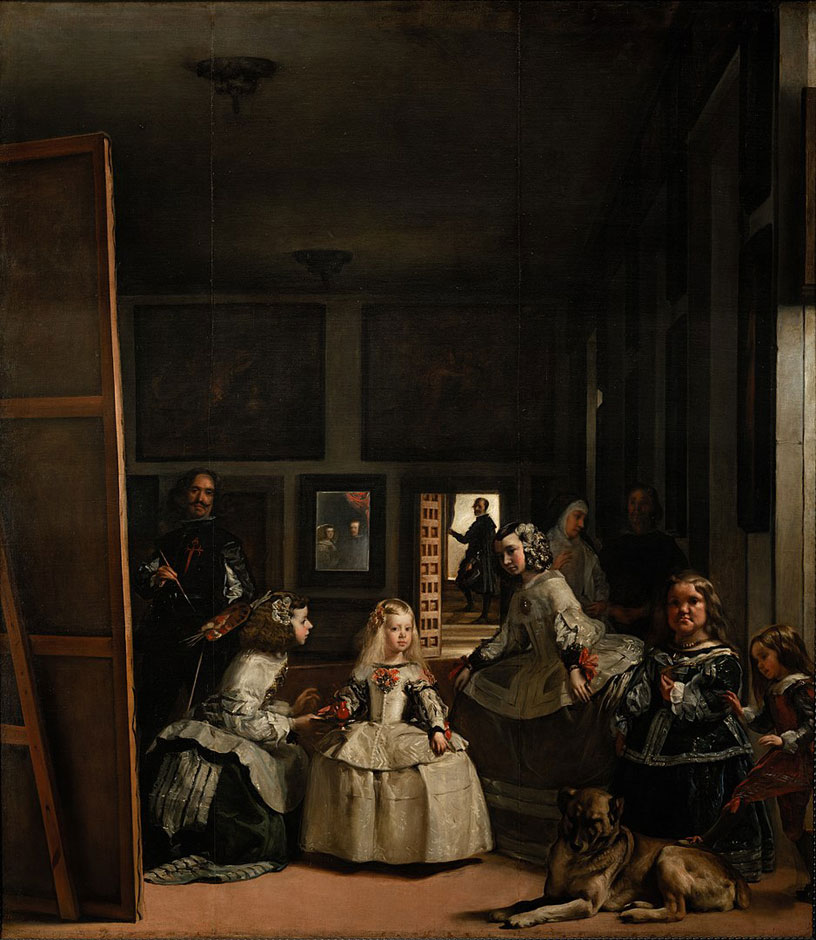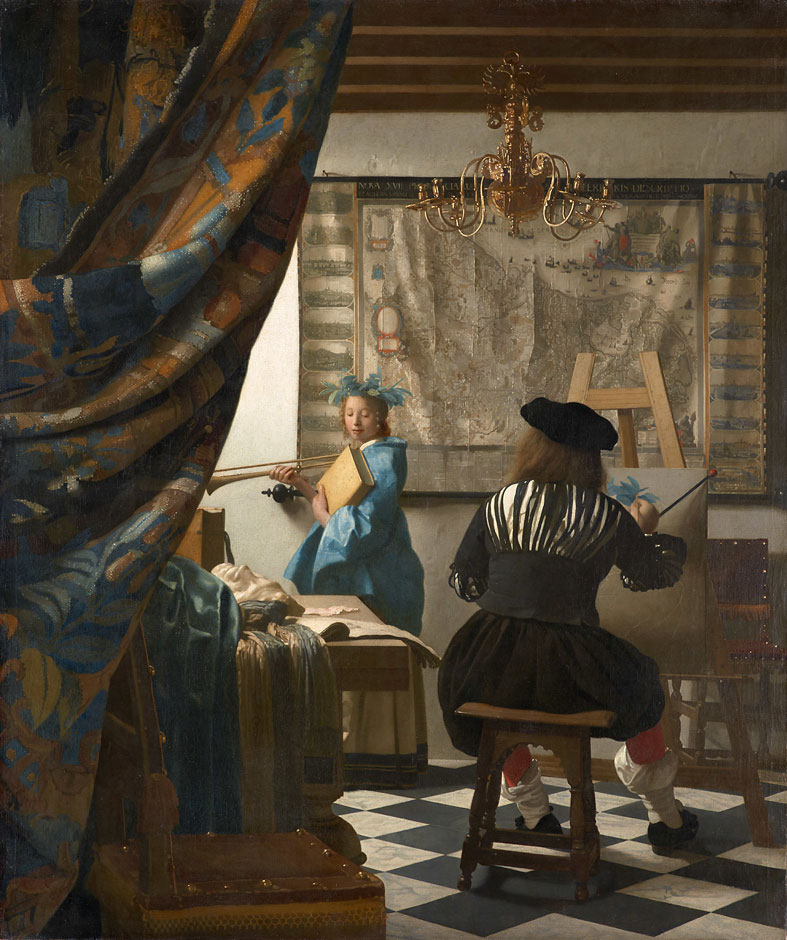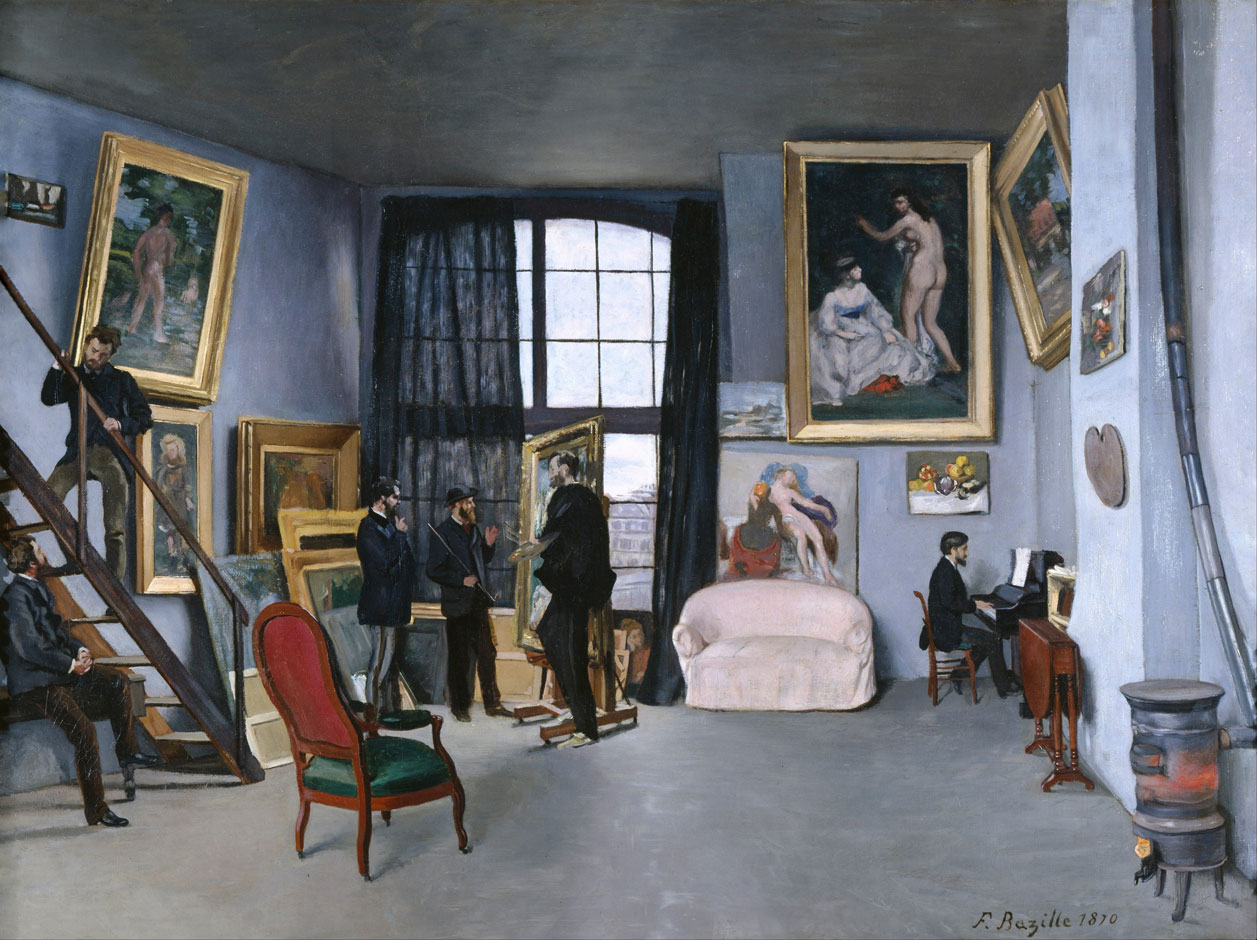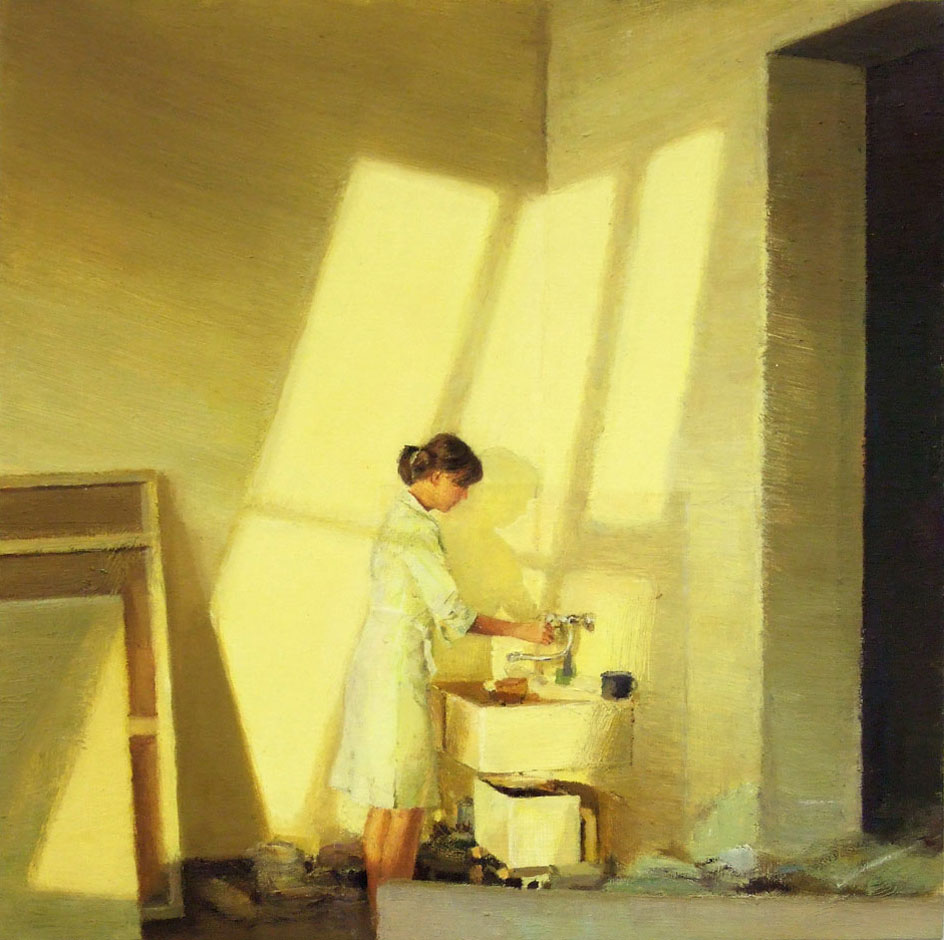In the Studio
Welcome to David Hockney’s Studio!
There is a long tradition of artists painting self-portraits in their studios, and David Hockney joins this tradition with a self-conscious statement.
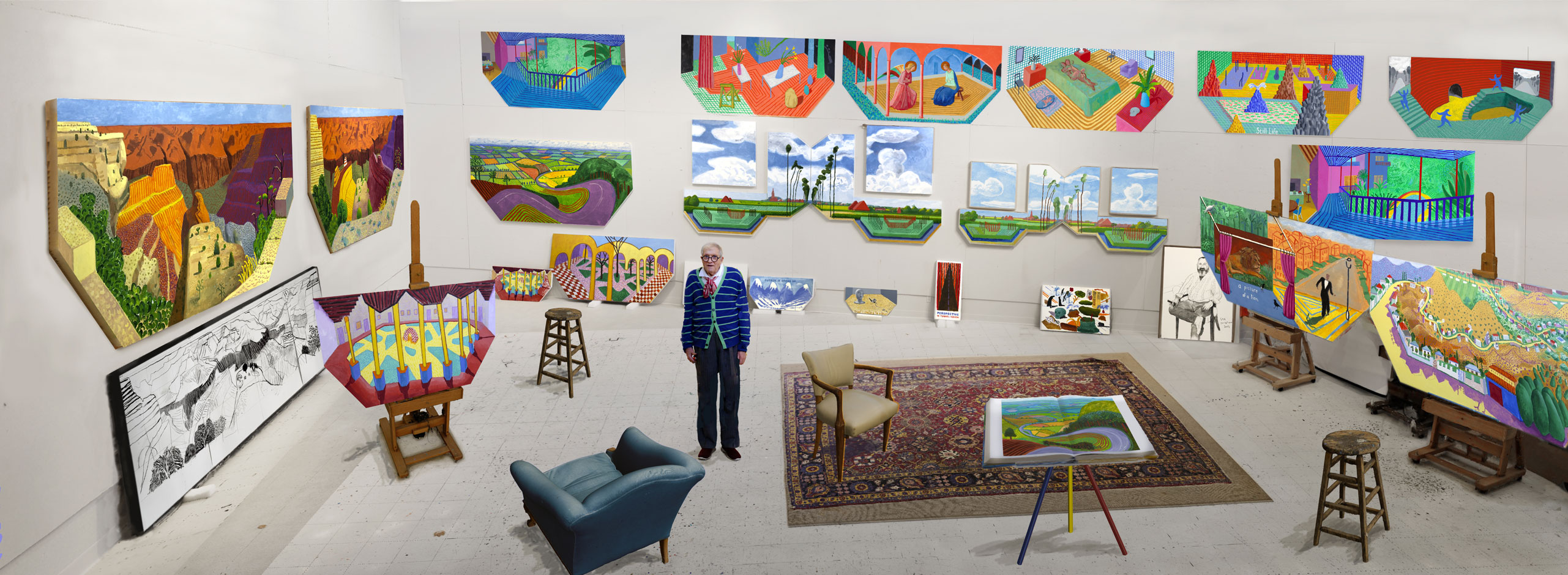
Hockney portrays himself here amidst some of his current works. His studio in the Hollywood Hills near Los Angeles is more like an exhibition room than a studio. There are neither paints nor brushes, and the easels are used for presenting paintings and not for working at.
Statement
The paintings in the studio form an exhibition of Hockney’s work in the year 2017. The main focus is on the use of reverse central perspective, which he emphasises by using hexagonal canvasses. Some of the motifs even crop up several times in different formats.
The work In the Studio refers to the artist’s development since he turned his back on naturalism in the 1970s. In this work Hockney is not so much showing us his studio as presenting his artistic credo and his ability. He presents the studio as a place for questioning and for precise observation. His main aim is to depict the world as we experience it.
Digital Collage
At first sight, the work seems like a conventional panorama photograph. This impression is disrupted however by various elements. What we see here is a digital collage made up of 3,000 photographic takes. David Hockney describes this technique as “photographic drawing”. The digital montage has not been carried out perfectly: the edges of objects fray in parts, some points are blurred, indistinct or pixelated. The legs and armrests of the easy chair have orange contours, while the shadows under the stools seem as if they have been drawn digitally.
Here David Hockey has chosen a new medium to continue what he began in the 1980s with his photographic collages and the series Moving Focus. In his search for a method that might enable him to depict the world as we see and experience it, Hockney uses ever new techniques. In his view, the simple photographic representation seems much too one-dimensional for this.
“Most people feel the world looks like the photograph. I’ve almost always assumed that the photograph is nearly right, but that that little by which it misses makes it miss by a mile. That is what I grope at.”
David Hockney, 2011
Painting within a Painting
For example, Meindert Hobbema’s Avenue at Middelharnis. Hockney divides the Dutch Master’s painting into several polygonal canvasses. By emphasising the line of the horizon and the symmetry, he further intensifies the highly construed composition of Hobbema’s painting. The inspiration for the painting hanging above it comes the Annunciation by Frau Angelico. Hockney is interested not so much in the biblical story of the Angel Gabriel appearing to Mary and announcing the birth of Jesus, as in the perspective, which he shatters by the irregular arcade and the hexagonal shape of the canvas.
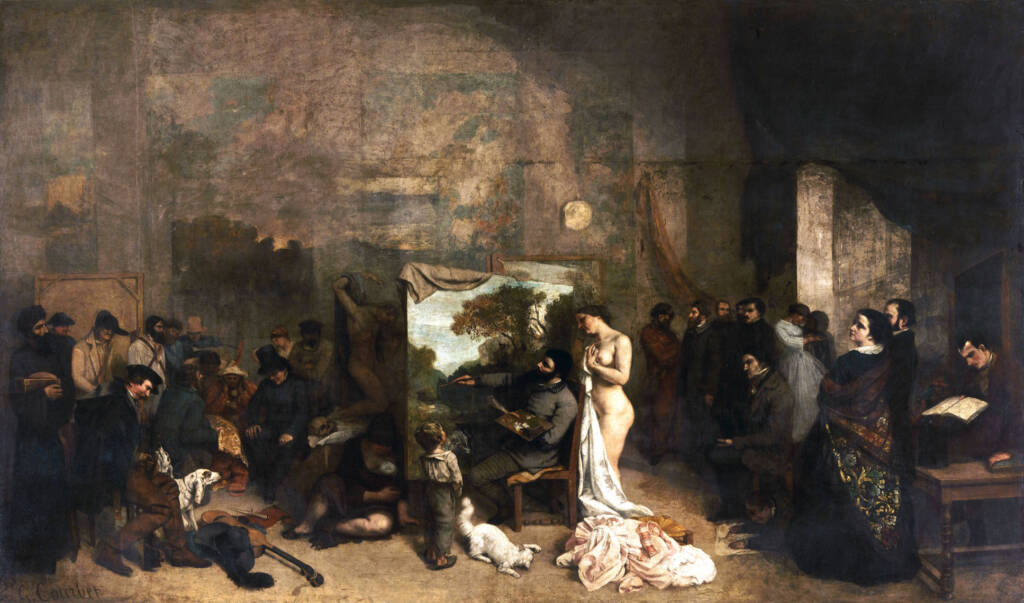
The Myth of the Studio
Hockney’s self-portrait in the studio also points to models. Gustave Courbet’s Artist’s Studio is one of the most important artist self-portraits. The French artist painted the picture in 1855 as a radical statement: in it Courbet is criticising academic art and taking a stand on realism, an epoch in art history that focussed on the everyday and the unprettified. Standing beside Courbet is a naked woman, the personification of truth. The artist thus claims that realism is the only genuine, “true” art. While ordinary people and their poverty are depicted to the artist’s left, to the right he has gathered representatives of the art world, among them the artist’s own friends and collectors, as well as the writer Charles Baudelaire. Courbet is quite deliberately turned towards the simple folk as he paints a sombre landscape.
